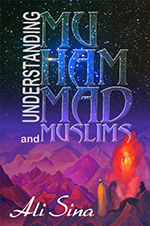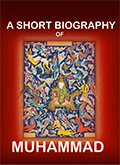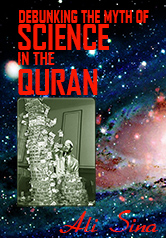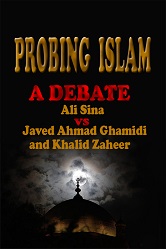How the global media whitewashed the Pahalgam Hindu massacre

Headlines of major Western media outlets on the Pahalgam terror attack
How major Western, English-language media outlets covered the Pahalgam attack only shows that India cannot rely on foreign press to tell its stories.
On April 22, 2025, in the pristine hills of Pahalgam, Jammu and Kashmir—once a symbol of the Valley’s blooming tourism industry—an act of horror unfolded that should have shocked the world’s conscience. Masked terrorists, armed and methodical, lined up a group of Indian tourists, demanded their identification, and began executing them one by one.
Survivors recounted chilling details: the assailants asked names, demanded proof of religion, asked them to recite Islamic prayers and in some cases, forced victims to remove their clothes to identify whether they were circumcised—a crude test to differentiate Hindus from Muslims.
Those who failed the test were shot at point-blank range. The result: 26 dead. All of them Hindus, with one victim being a Shia Muslim.
And yet, as global media rushed to report the attack, the coverage offered not clarity, but camouflage. What should have been called a ‘terrorist massacre of Hindus by Islamist extremists’ was transformed into a vague incident involving “gunmen” in “Indian-administered Kashmir”.
The facts were stripped of their moral urgency. The words were drained of their truth. And the victims, like so many before them, were robbed not just of life—but of recognition.
This was not just a failure of journalism. It is an act of editorial complicity in the erasure of Hindu suffering and the delegitimization of Indian sovereignty. And it deserves to be called out with the force and clarity it has long been denied.
Gunmen, Militants and Rebels
When 26 Jewish worshippers were gunned down in Pittsburgh, the New York Times did not hesitate to call it ‘antisemitic terrorism’. When Christians were killed in Sri Lanka on Easter Sunday, the BBC and CNN acknowledged it as religiously-motivated terrorism. But when Hindus are hunted and murdered in India, the vocabulary suddenly shifts.
The killers are no longer terrorists—they become “gunmen” (BBC, Washington Post, Al Jazeera), “militants” (Reuters, NYT, AP), or “rebels” (Al Jazeera). And the act? Not terrorism, but a “shooting,” a “raid,” or, most perversely, “a rare attack on tourists.”
Such language is not accidental. It is political. It functions as a buffer between the truth and the audience, sanitizing the brutality of religious terrorism into something that sounds closer to a localized skirmish. This is a form of narrative laundering—where the killers are depersonalized, the ideology behind the violence is omitted, and the victims are anonymized.
In the case of Pahalgam, this distortion reached absurd levels. Outlets like Reuters emphasized how the men were separated from the women and children—as if this were a gender-based crime. CNN highlighted that some victims were accused of supporting Prime Minister Modi, subtly shifting blame onto the Indian state. Washington Post filled its report with imagery of ponies and photo-snapping tourists, blurring the lines between horror and travelogue. And AP, in an astonishing act of euphemism, said that “militants fighting against Indian rule” were responsible—thus turning mass murderers into freedom fighters.
Nowhere, in these early reports, was it stated bluntly that Hindus were killed because they were Hindus. Nowhere was the ideology of the killers named. And nowhere was the word “terrorism” allowed to stand alone, unqualified, as it would have been had the victims belonged to any other globally vocal minority.
Delegitimising Indian Sovereignty
This bias is not limited to the naming of terrorists. It extends to geography—and to politics. The global media’s allergy to acknowledging Hindu persecution is inseparable from its broader discomfort with India’s assertion of sovereignty, particularly in Kashmir.
Nearly every Western outlet described the location of the massacre as either “Indian-administered Kashmir” (BBC, CNN, Washington Post, Al Jazeera) or “Indian-controlled Kashmir” (AP, Guardian). Some, like CNN, preferred the more pointed “disputed Kashmir.”
These terms are not neutral. They are carefully chosen phrases that frame the legitimacy of India’s territorial integrity as conditional or controversial.
India’s sovereignty over Jammu and Kashmir is enshrined not only in its Constitution but affirmed through a series of post-accession democratic processes. Yet, the global press continues to use language that subtly mirrors Pakistan’s narrative—which seeks to portray the region as a contested no-man’s land rather than a constitutional part of the Indian Union.
In doing so, they contribute to a long-standing campaign of delegitimization—casting India as an occupying power rather than a sovereign state defending its citizens from religious extremism. This semantic sleight-of-hand doesn’t just distort perception. It distorts reality.
Phrases like “Indian-administered Kashmir,” “Indian-controlled Kashmir,” and “disputed region” are now so commonly used that they go unchallenged. But language is never neutral—especially not here. These descriptors subtly, yet unmistakably, suggest that India is an occupying force, a colonial power, and that its presence in Kashmir is illegitimate.
This framing ignores that Jammu and Kashmir is a legal and constitutional part of India, the result of a fully ratified Instrument of Accession in 1947. It ignores that the people of the region have voted in Indian elections for decades. And it ignores the fact that Pakistan—a country with a proven track record of supporting jihadi terrorism—has no rightful claim to the territory.
Yet major outlets like Al Jazeera, The Washington Post, CNN, and Reuters continue to use terminology that subtly endorses the Pakistani position, even as Pakistan-based terror outfits commit massacres like the one in Pahalgam. This isn’t just poor journalism. It’s ideological sabotage—a way to delegitimize India’s fight against terrorism by recasting it as a political conflict rather than a moral one.
Victimhood Inversion
Perhaps the most damning aspect of the coverage was how quickly the global press moved to invert the lens of victimhood.
No outlet exemplified this more clearly than Al Jazeera, which, after briefly reporting the massacre, pivoted within days to running a feature titled: “We’re Cursed: Kashmiris Under Attack Across India After Pahalgam Killings.” The piece was a masterclass in deflection—portraying Kashmiri Muslims as the real victims, persecuted in cities far from the actual scene of the massacre.
It is the same playbook used time and again: a deadly Islamist attack occurs, Hindus die, and within 48 hours, the global narrative is about “backlash” against Muslims. What should have been a reckoning on Islamic radicalism in Kashmir became, in the hands of Western media, a morality play about Hindu majoritarianism and nationalist overreach.
The Guardian, not to be left behind, made sure to mention that protests in Jammu against the attack were led by “rightwing vigilantes”—a phrase it apparently found more alarming than the fact that unarmed civilians were shot execution-style by religious fanatics.
This is the heart of the problem. The death of Hindus is rarely permitted to remain the central story. It must always be contextualised, qualified, or reframed—either as a consequence of Indian policy or as part of some nebulous “cycle of violence.”
The Reluctance to Say “Hindu”
Perhaps the most telling omission in all these reports is not what was said—but what was deliberately left out: the victims were Hindu.
To its minimal credit, the BBC briefly noted that “most of the victims were Hindu men,” only to immediately muddy the waters with contradictory claims that “a local Muslim man was among the victims” and that some eyewitnesses described the attack as “random.”
Others—CNN, AP, The Guardian, and Reuters—avoided the word “Hindu” altogether in their initial coverage. This is no small oversight. It is a profound refusal to identify the religious identity of the victims when that identity was central to the attackers’ intent.
When Islamic terrorists stormed a Jewish grocery store in Paris in 2015, no outlet hesitated to say that Jews were targeted. When the Christchurch mosque attack happened in New Zealand, every headline carried the word “Muslim.” Yet when Hindus are killed for being Hindu, we are told the motives are “unclear,” the shooters are “gunmen,” and the victims are just “tourists.”
This is not ignorance. This is an editorial decision. A decision rooted in the fear of naming Hindu victims for what they are—targets of religiously-motivated Islamist terror.
By evading the truth, Western outlets deny Hindus the basic dignity that every other faith community is granted in moments of tragedy: the right to have their pain acknowledged and named.
Why does this happen? Why does the global press leap to spotlight every misstep—real or perceived—of the Indian state, but struggle to name or confront the death of its citizens at the hands of terrorists?
Because in the dominant narrative constructed by the global elite media, Hindus are not seen as victims—they are cast as power-holders. India, with its growing economy and assertive diplomacy, is increasingly viewed through a lens of suspicion. Add to that the rise of Prime Minister Narendra Modi, and you have the perfect target for Western outlets steeped in a postcolonial guilt complex and obsessed with binaries of “oppressor” and “oppressed.”
This framework does not allow for complexity. It cannot accept that the victims of violence in Kashmir might be Hindus. Or that Islamist violence might be fueled by global jihadist ideologies rather than “resistance to Indian rule.” Or that a strong Indian state might actually be a force for good in a region plagued by decades of Pakistan-sponsored terror.
And so, when the facts do not fit the narrative, they are twisted. When Hindus are slaughtered in cold blood, their deaths are turned into a political talking point about Modi, about 2019, about Article 370—about anything except what really happened: a religiously-driven massacre by Islamic terrorists targeting a specific community, in this case, the Hindus.
The Need for a New Media Paradigm
The consequences of this narrative manipulation are not merely academic. They are moral. They are geopolitical. And they are deadly.
When global media refuses to name Islamist terror against Hindus, it contributes to a culture of impunity and erasure. It signals to terrorist groups that their violence will be either obscured or explained away. It robs the victims of dignity and the survivors of justice. And it reinforces a dangerous asymmetry, where some lives are mourned loudly, while others are reduced to footnotes, filtered through a lens of doubt and denial.
And make no mistake—this is not just about Kashmir. This is part of a broader pattern in Western journalism, where crimes against Hindus, particularly in the Indian subcontinent, are systematically underreported, decontextualized, or outright ignored. Whether it’s the ethnic cleansing of Kashmiri Pandits, the pogroms against Hindus in Bangladesh, or the temple desecrations in Pakistan, the pattern remains the same: Hindu suffering is either invisible or inconvenient.
The Western media’s treatment of the Pahalgam massacre was not merely negligent—it was ideologically choreographed. At the heart of this choreography lies a dangerous cocktail: selective language, inverted victimhood, and geopolitical bias masquerading as journalistic neutrality. Together, these narrative tools have not only distorted the truth about the Pahalgam killings, but contributed to a larger, systemic effort to erase Hindu suffering from the global conversation on religious violence.
What is to be done? For one, Indian media, civil society, and diaspora communities must begin calling out this hypocrisy with relentless clarity. Silence is not neutrality—it is complicity. Every act of omission, every euphemism, every blurred headline must be named for what it is: a moral failure.
Secondly, it is time for India to develop its own robust international media infrastructure—one that can report on such incidents without fear, ideological distortion, or colonial hangovers. It is no longer acceptable for India—a country of 1.4 billion, with a growing global footprint—to rely on foreign media outlets to tell its stories, especially when those outlets are hostile to its sovereignty and blind to the suffering of its majority.
Finally, the Indian government and its diplomatic corps must hold Western media accountable—not through censorship, but through fact-checking, rebuttals, and strategic pressure. If Israel can push back against hostile media narratives, so can India.
A Final Word: Remember Their Names
In a just world, the 26 Hindus slaughtered in Pahalgam would be remembered by name. Their stories would be told. Their deaths would be condemned in every capital of the free world. Instead, they have been rendered into shadows—flattened by the soft tyranny of euphemism and the hard edge of ideological bias.
To call this a media failure is not enough. This is a moral abdication, a betrayal of the very principles that journalism claims to defend: truth, justice, and the dignity of human life.
The Pahalgam massacre should have been a turning point—a moment when the world united in condemnation of Islamist terrorism in the Indian subcontinent. Instead, it became another exhibit in the long, shameful history of how Hindu suffering is whitewashed, minimized, and ignored.
We will remember. We will speak. And we will not let silence bury the truth.
Source: https://swarajyamag.com/ideas/how-global-media-whitewashed-the-pahalgam-hindu-massacre





Recent Comments